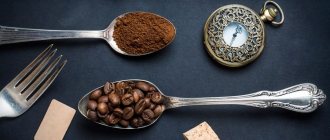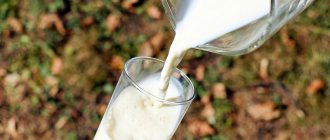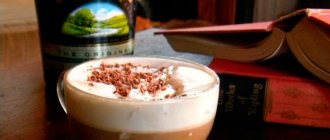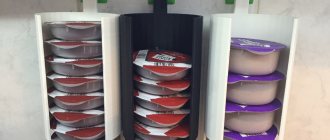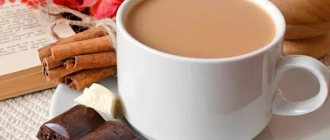About a teaspoon
It is worth saying that spoons have always been an integral attribute in human life. Their story began even before the discovery of iron. Previously, people used their wooden counterparts or used pieces of nut shells and similarly shaped pebbles as cutlery. As for Rus', even during the reign of Peter I, the boyars practically did not have their own dishes, including cutlery. At this time, spoons were a sign of luxury and high culture. It was only around 1760 that spoons acquired our usual shape, which was very convenient to use. From that time on, spoons began to be divided according to size and purpose, becoming a part of people’s lives. As for the teaspoon, today it can be made from a variety of materials: wood, aluminum, plastic, precious metals such as silver or even gold. Very often, modern manufacturers produce teaspoons with different combinations of metals: a stainless steel handle can be decorated with ivory, and a silver spoon can be plated with gold.
Care Tips
- Pay special attention to the scoop: if you do not wash it thoroughly enough, stubborn stains may remain on the device.
- If your spoons have handles and scoops made of different materials, it is recommended to wash them by hand: it is not easy to select the appropriate program in the dishwasher.
- Silver spoons should be soaked from time to time in the water remaining after boiling potatoes. This will give them shine.
Images used in this article: eternum.com, tupperware.de, carrs-silver.co.uk, cilio.de, lukihuber.com
Volume of a teaspoon
It will not be a secret to anyone that the basis for measuring the volume of any object is water. So, according to these indicators, a teaspoon contains 5 g (ml) of water. However, housewives should not forget that the volume will vary for different products. So, for example, only 3 grams of ground cloves will fit, but as much as 30 grams of butter! In this case, information about the volume of a heaped teaspoon may be important. This formulation can often be found in recipes and will be equal to approximately 7 grams.
How many grams of coffee in a coffee machine
In an automatic bean coffee machine, the weight of ground coffee (and accordingly the amount of beans used) for one coffee tablet (that is, for one grind) depends on:
- Set to “strength” in the settings.
- The program used. There are special ones, for examples see the material about Delonghi recipes.
- Brewing device designs.
There can be from one strength (there is no strength adjustment) to 10-12 (for Jura flagships, for example). Each manufacturer usually uses only 1-2 types of brewing devices for all of their coffee machines. Plus, almost all machines have an automatic adjustment system that can make +/- gram adjustments. Below are the theoretical possible values for modern models.
| Minimum strength | Maximum strength | |
| Delonghi | 6 | 14 |
| Philips/Saeco/Gaggia | 7 | 10-11 |
| Krups | 8 | 10 |
| Bosch | 7 | 12 |
| Siemens EQ.6 | 7 | 12 |
| Siemens EQ.3/300/500/9 | 5 | 14 |
| Melitta/Nivona/Miele | 7 | 14-15 |
| Jura ENA/A | 6 | 10 |
| Jura (others) | 5 | 16 |
Once again: these are theoretical values, real ones may differ depending on the grain itself, the degree of grinding, and adjustments to the adaptive system.
If you want to know the amount of beans ground at each intermediate strength for your automatic coffee machine, then divide the range of possible values (max-min) by the “number of strength levels minus one” - you will get a step of each degree.
For example : Saeco coffee machine with five levels of strength. Fork 11 - 7 = 4 grams. “The number of degrees of strength minus one” = 5 - 1 = 4. Divide four by four = 1 gram - this is the strength step. The minimum, also known as the first, is 7 grams, two grains are 8 grams, three grains are 9 grams, the fourth degree is 10 grams, the fifth maximum strength is 11 grams.
How many grams of coffee are in a complete coffee machine measuring spoon?
All automatic coffee machines that can handle pre-ground coffee come with a measuring spoon. Different brands have measuring spoons of different shapes, but they all have almost the same capacity - 8-9 grams of ground coffee, for Phillips/Saeco, for Delonghi, for Bosch.
But you need to understand that this figure is even more approximate than when it comes to a teaspoon or tablespoon. First of all, 8-9 grams is the capacity without a mound, and when you scoop, you are sure to add a couple of grams on top. Secondly, I repeat, the grammage is influenced by the variety itself and the grinding. Since you use the included measuring spoon for your coffee machine, it means that the coffee most likely came from a store-bought pack of ground coffee, but their grind varies greatly, and you can no longer influence it. But be that as it may, aim for 8-9 grams.
How many servings does a 250 g and 1 kg pack of coffee last?
Also a popular question from owners of grain machines. Moreover, this question is often asked by people who use or plan to use the machine in commerce. But people at home are also interested, thinking about how to save on grain, or planning the family budget...
The calculation method is simple and directly depends on how much coffee is used for each individual brew. Above in the table I have described the fork strength for each brand. You must calculate how many grams are used at your strength for your coffee machine and divide the mass of a pack of beans by this figure, be it 250, 500 grams, or a kilogram. Below in the table are approximate portions that can be prepared from one pack of grains. You should never take these numbers as ultimatums, they are just a guideline, the machine can always use at least +/- 1 gram for each preparation.
| 250 g at min. strength | 250 g at max strength | 1 kg at min. strength | 1 kg at max strength | |
| Delonghi | 40 | 17 | 160 | 68 |
| Philips/Saeco/Gaggia | 35 | 22 | 140 | 88 |
| Krups | 31 | 25 | 124 | 100 |
| Bosch | 35 | 20 | 140 | 80 |
| Siemens | 50 | 17 | 200 | 68 |
| Melitta/Nivona/Miele | 35 | 17 | 140 | 68 |
| Jura | 40 | 15 | 160 | 60 |
Example: if you brew espresso and any drinks based on it at maximum strength (and this is usually the case), there are two of you and you drink 2 servings a day, then on average, with almost any coffee machine, a 250-gram pack will go away in just 5 days . So you shouldn’t be surprised “where so many grains fly away.”
About the coffee spoon
As already mentioned, not all people know that there is also a coffee spoon. Why is she so special? First of all, it should be noted that the main indicator for determining the type of spoon will be its size. Many may be interested in a very important question: what does a coffee spoon look like? It is distinguished by its very small, almost doll size. That's all the differences. However, that's not all...
Minor species
Or auxiliary. Act as an assistant on the table:
1. Salad maker. He helps transfer the salad from the large communal salad bowl to his plate.
2. A pouring spoon, used when laying out main dishes on individual plates.
3. An ice cream device shaped like a small spatula.
4. Spoon for sauces. It is a small spoon with a slightly elongated nose.
5. Spoon with a long handle. It is used when stirring all kinds of cocktails.
6. Curly spoon. Needed for transferring jam from a common vase to individual sockets.
7. Spoon for potato tubers. In appearance it resembles a tuber. It has so-called “ears” on both sides, which protect the potatoes from falling.
8. Sour cream spoon, the purpose of which is clear from the name.
9. Spice spoons. They are miniature in appearance and must be next to the spices in the stand.
In addition to the indicated types of utensils in question, there are spoons for decoration. Wooden spoons are also used as a musical instrument.
Material of manufacture
What materials can a coffee spoon be made from? Most often this is stainless steel, precious metals (gold, silver, aluminum). As a gift option, coffee spoons are carved from wood. The travel sample is made of plastic. However, manufacturers create cutlery from combinations of metals: silver - gold, stainless steel - medical alloy. It is also worth mentioning that you can see various gift options for coffee spoons on sale: made of high-quality metal and in beautiful packaging. Another interesting fact is that it is customary for small children to be given tiny spoons for their first tooth or for birth. It’s good if it’s not a teaspoon, but still a coffee spoon. After all, it can become the baby’s first cutlery at the time of introducing complementary foods, since it has a small, just suitable volume.
Bottom line
All cutlery - be it large, dessert, tea, even decorative - accompany us in our daily life. Most people can no longer imagine life without cutlery. Today, table sets can be found in any style - from classic to vintage and hi-tech. But the most popular and easiest to use material for appliances remains stainless steel.
As a result, the cost of sets, including spoons, can vary significantly. But remember that it’s not what you eat that matters, it’s how you eat that matters. At the table, keep your back straight, and hold your spoon (or any cutlery) like a scepter. If you use a spoon as a measure of weight, it was previously written how many grams are in a dessert spoon.
Attention, TODAY only!
Most people are accustomed to the fact that there is a table spoon, a dessert spoon and a teaspoon. That is why for many it will be a revelation that there is also a coffee spoon. What is its peculiarity and how to use it correctly - this will be discussed.
Purpose
It is very important to know how and when to serve a coffee spoon and when to serve a teaspoon. So, the names themselves speak volumes: when drinking tea, you need to put teaspoons on the table, but according to all the rules of table etiquette, coffee should be served with small coffee spoons.
It is important to remember that coffee spoons have different handle lengths. After all, for example, if a guest wants to drink iced coffee or Irish coffee, which is served in tall glasses, then for this he needs to take a coffee spoon with a rather long handle. Otherwise, the original cutlery will dive completely into the cup of drink.
List of teaware
So, what are tea utensils? Modern sets are mainly equipped with the following items:
- mugs and saucers,
- teapot,
- sugar bowl,
- sometimes a milkman and a butter can.
The mug has a wide cone shape with a widened bottom. A handle is attached to the side for easy tea drinking. The bottom can be flat or on a short neat leg. The cup capacity is 200-250 ml.
The saucers are in tandem with the mug in terms of material and manufacturing design. They are small in diameter, usually up to 15 cm, and can be flat or with a depression from the center to the periphery. Their use is to prevent tea droplets from contaminating tablecloths or clothes.
The teapot is an important element of the service in which the drink is prepared. Always comes with a lid. The standard volume of dishes varies from 500 to 800 ml, but there are also very small models of 200 ml or copies designed for a large company, 2-3 liters each.
Many people prefer to drink sweet tea; there is a sugar bowl to serve sugar on the table. It is usually small in size (300 ml), has two handles on the sides and a lid.
European tea drinking traditions involve drinking tea with milk or cream, for which a device such as a milk jug was invented. It is slightly larger in volume than a cup, up to 300 ml. It has the shape of a small jug with a spout and handle.
A butter dish is needed to serve butter on the table. It looks like a small rectangular plate with sides. It may have a lid, but usually it is served without it for serving.
Table etiquette
A few words also need to be said about how the coffee spoon should be served correctly, that is, how it should be placed if you want to treat your loved one with coffee according to all the rules. It is important to remember that a cup of hot drink is almost always served on a saucer. The handle of the cup should point to the right and must be parallel to the table. It is possible that black coffee is served without grounds, in which case the handle of the cup may point to the left (necessarily parallel to the table). However, the coffee spoon always retains its standard position: it is placed behind the cup with the handle to the right in relation to the person who will enjoy the aromatic drink.
Basic (individual) spoons
Tablespoon. Designed for all first hot courses. Its length is somewhere between the size of a table knife and a fork. When serving, it is placed to the right of the plate with the scoop up, next to the fish knife.
Dessert spoon. It should be on the table if mousse, pudding, fruit in syrup, berries with cream and other dishes that do not require cutting are served as dessert. A spoon for grapefruit usually has a slightly elongated scoop, for kiwi it is almost round. A dessert spoon is slightly larger than a dessert fork. It is usually placed above the plate, with the scoop to the left.
On the picture:
Ice cream spoon. It has the shape of a spatula with slightly curved edges. It is slightly smaller in size than dessert. It does not lie on the table, it is served along with the delicacy itself.
On the picture:
Spoon for cold drinks. The shape and size of the scoop is often similar to a tea scoop, but has an elongated handle.
On the picture:
Tea spoon. Designed for stirring sugar in tea, hot chocolate, cocoa, coffee with milk. Outwardly similar to the dining room and dessert room, but much shorter. Served with a pair of tea.
Coffee spoon. Served at the table if coffee is part of the meal - black or oriental (with grounds). In shape it usually differs little from a teaspoon - the only difference is its miniature size.
On the picture:
Small conclusion
Now, if our readers have a teaspoon and a coffee spoon in front of them, no questions will arise. Indeed, at the moment it is already extremely clear how these tableware items differ: size and purpose. If, after everything you’ve read, you still don’t understand what a coffee spoon looks like, a photo is your first assistant in this matter. So, for convenience, it is better to look at our photographs to see how a coffee spoon looks in comparison with a tea spoon, and draw certain conclusions for yourself. It is worth mentioning that for some people it is bad form when serving teaspoons with coffee. After reading our article, you can easily avoid awkward situations. After all, we informed you about everything.
Differences between a dessert spoon and a regular spoon
Dessert spoon – what kind of spoon is it? All types of spoons are united by their shape, which resembles a small spatula. A standard spoon consists of two parts: a scoop and an elongated handle connected to it. This device can be used not only for eating (as is commonly believed), but also for decoration and even during laboratory experiments.
The following types of spoons are used for table setting:
- dining room;
- dessert;
- tea room
Some aesthetes also distinguish a special one. Moreover, if a tablespoon is a necessary utensil on every table, then the dessert spoon is very often forgotten, since dessert is not always present on the table. However, those with a sweet tooth will truly appreciate the dessert device.
A dessert spoon should be on the table if serving mousse, pudding, fruit in syrup, berries with cream, as well as other dishes that do not require cutting
Of course, no one will forbid you to eat desserts using an ordinary tablespoon, but using a device designed specifically for this is more aesthetically pleasing. Even the dish in this case will acquire a different taste.
What other spoons are there?
Of course, these three types do not cover the list of all the variety of spoons and spoons intended for meals. Let's take a quick look at other types:
- Coffee shop. The size of this spoon is half the size of a teaspoon, only 2.5 ml. Also, for those who brew coffee in a Turk, these coffee spoons are made with a long handle to make it convenient to stir coffee in a Turk;
- Spoon for grapefruit, melon or kiwi. The highlight of this spoon is the sharp teeth on the edges. The volume of such a device is similar to a dessert spoon;
- Olive spoon. This is a small spoon with a hole in the middle so that the marinade can drain and the olive itself remains in the spoon. Features an elongated handle;
- Bar spoons. Includes a variety of equipment for preparing absinthe, for mixing cocktails, etc.
In elite restaurants you can find special spoons for oysters, eggs, cheese and other delicacies.
Consider the degree of grinding
The exact mass of grains depends on the degree of grinding. The difference is especially noticeable when weighing the freeze-dried and powdered varieties. The mass of ground grain raw materials also differs.
The quantities shown above are based on medium-ground berries. This option is used in carob coffee makers and coffee machines. Manufacturers in 90% of cases present fractions of medium grinding to the market.
Interesting! How many spoons of coffee should I put in a Turk?
But they are not suitable for preparing Turkish treats in a cezve. Finely ground berries are added to it. They are pre-ground into dust.
Wooden spoon for honey
People call a honey spoon with slots a “spindle.” What is such an object? The spoon is made from natural hardwood and looks like a small mace with an oblong tip with slots on it. The handle of this spoon is very long, making it convenient to get the sweet treat even from deep cans.
The honey is wound onto a mace, flows through the slots, and thus you can easily transfer it to another container, for example, a bowl or jar, without spilling a drop along the way. You can safely leave a spoon of juniper in the honey; it will not spoil.
The beauty of presentation
Let's highlight the serving sets, which include the heroes of this article.
Table set of three items (spoon, fork, knife). Used when serving main courses. The size of the knife from this set is almost similar to the diameter of the plate on which it is served, the size of the other items is slightly smaller. The fork and spoon from the cutlery set help in transferring portions from a common dish.
The dessert set is similar in composition to the table set. The volume of a dessert spoon is slightly smaller than that of a tablespoon; it is used when serving sweet dishes (ice cream, mousses, puddings, compotes, creams). If broth is served, this spoon can also be seen on the saucer next to the bowl.
